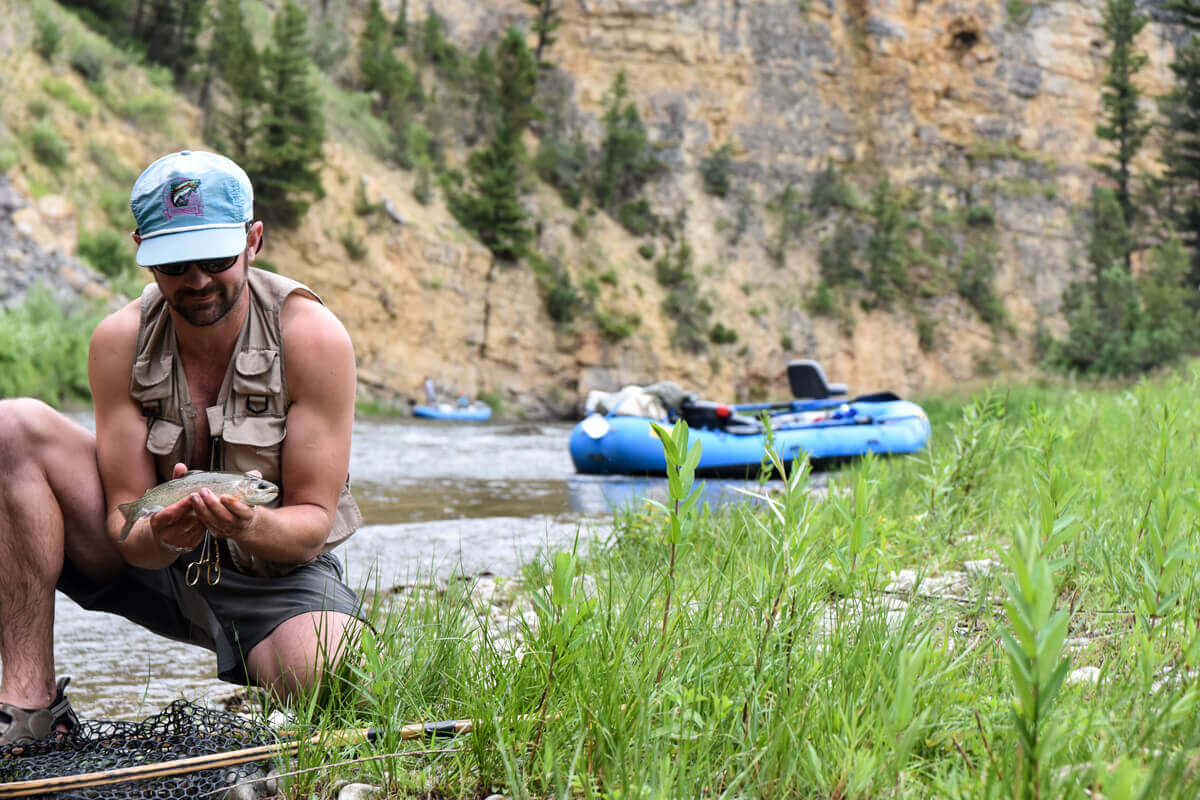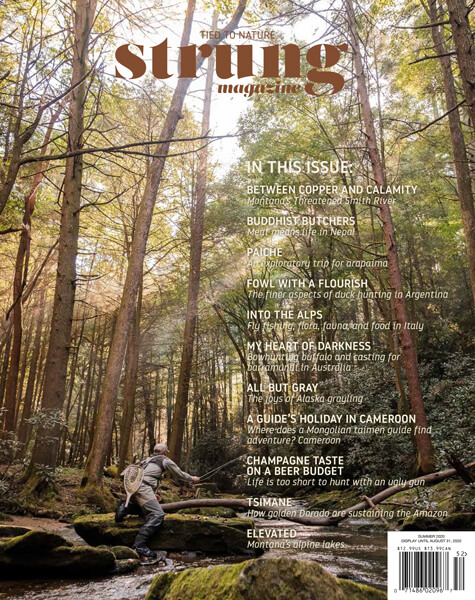Winding 110 miles from its montane headwaters to an unassuming juncture with the Missouri River, Montana’s Smith River has long been recognized as a priceless treasure by the state’s citizens and outdoor enthusiasts. Just over 60 miles of the river flow through a steep-walled canyon, weaving through serpentine bends flanked by lush meadows, fragrant pine forests, and varicolored limestone cliffs arching hundreds of feet overhead. Bordered along much of its length by private land and labelled as a “semi-wilderness,” the Smith feels self-contained and otherworldly like few places on the continent.
The Smith easily ranks among the state’s most iconic and scenic destinations, as well as the most regulated: It is Montana’s only river permitted with a lottery system. Applications open in February, and competition for a few days in paradise is fierce. The odds of drawing a golden ticket range from year to year: Between 1 in 6 and 1 in 9 applications receive a permit, entitling the recipient to float in a group of up to 15 individuals between the put-in at Camp Baker and the take-out at Eden Bridge.
After the initial hurdle of drawing a permit comes the question of timing: The float season extends from late spring into early fall, but within that window conditions may fluctuate wildly, and only certain river levels allow visitors to make the most of the river’s mythologized trout fishery. If the river gods should grant the right combination of insect hatches, temperatures, and flow levels, an angler can take fish averaging around 15 inches from sunrise to sunset, with specimens pushing 20 inches not uncommon. In recent years, however, rising temperatures and inadequate snowpack have delayed, disrupted, and shortened float seasons, and the quality of both fishing and floating more and more often hinges on perfect timing. If the water is too low, navigation becomes difficult and fish populations suffer; if it rises suddenly as snowmelt releases too quickly, the river becomes swollen and murky, and late season flows down the line are impacted. Also linked to the higher annual temperatures of recent years, algal blooms have become the recurring bane of fisheries biologists and anglers alike.
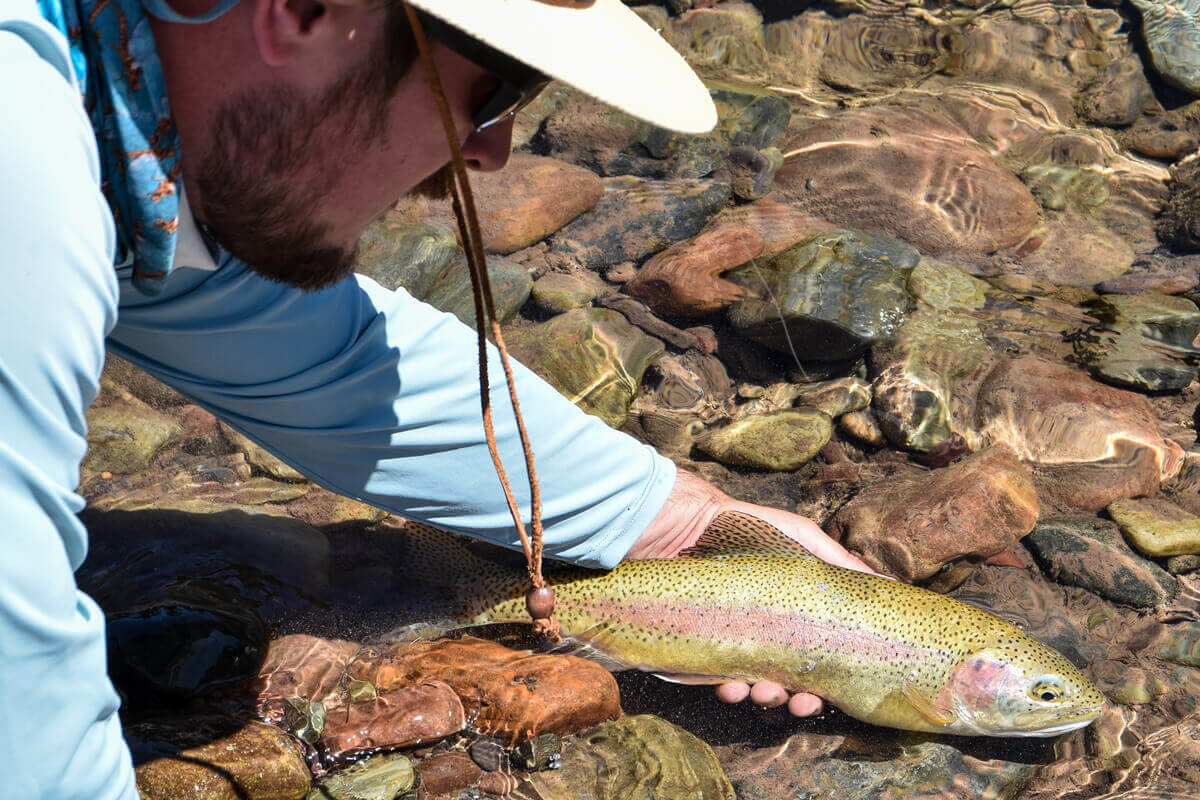 Compared to the groups of 15 that often ply the river in midsummer, our cadre of four was scaled for relative solitude: three old friends from the environmental history program at Montana State University, plus a younger brother tagging along on his first river experience. That this legendary destination might be in imminent danger was the last thing on our minds, dizzy as we were with anticipation of flashing trout, nights around the campfire, and cold rushing waters under open skies. For months before our put-in date, we tracked the river’s surging and ebbing flows on the USGS website. As it happened, 2019 was a good year for Smith floaters, owing to a combination of moderate rainfall and lower temperatures than preceding seasons. When we launched on July 16, flows measured around 330 feet per second–modest enough to make for excellent fishing but still comfortably navigable in our boats.
Compared to the groups of 15 that often ply the river in midsummer, our cadre of four was scaled for relative solitude: three old friends from the environmental history program at Montana State University, plus a younger brother tagging along on his first river experience. That this legendary destination might be in imminent danger was the last thing on our minds, dizzy as we were with anticipation of flashing trout, nights around the campfire, and cold rushing waters under open skies. For months before our put-in date, we tracked the river’s surging and ebbing flows on the USGS website. As it happened, 2019 was a good year for Smith floaters, owing to a combination of moderate rainfall and lower temperatures than preceding seasons. When we launched on July 16, flows measured around 330 feet per second–modest enough to make for excellent fishing but still comfortably navigable in our boats.
Only our intrepid leader had floated these waters before, albeit in subpar conditions. (Two in the party were veteran anglers who owned boats and had worked as fishing guides.) This time around luck smiled on us, and we enjoyed five days of round-the-clock fish rises, congenial weather, and sublime natural beauty. Indeed, we had lucked out twice: first by drawing a permit, and then by receiving a launch date coinciding with prime conditions.
To the hardcore trout bum the aesthetic and ecological qualities of a river sometimes amount to so much background noise; on this trip, however, the phenomenal fishing had to fight tooth-and-nail for our attention with the river’s astonishing succession of scenery and wildlife. On the one hand, the Smith is indeed timeless: a pristine, primordial ribbon that is home to countless species of plant and animal–and that provides a balm to humans from the chaos and stress of modern life. Looked at historically, on the other hand, a more dynamic and ambivalent picture emerges. Since long before the first Euro-American settlers arrived, the river has been inhabited, utilized, and modified by diverse communities of people. Much of that history, as well as the Smith’s ecological richness, is tied to the fact that the Smith is an ecotone–a transition zone between two biomes. Neither fully of the plains, which stretch away eastward, nor belonging to the mountain vastness of the interior Rockies looming to the west, the Smith’s high grassy plateaus and plunging wooded canyons embody a mixture of both landscapes, providing a refuge for ancient peoples as well as later Euro-American populations in transition.
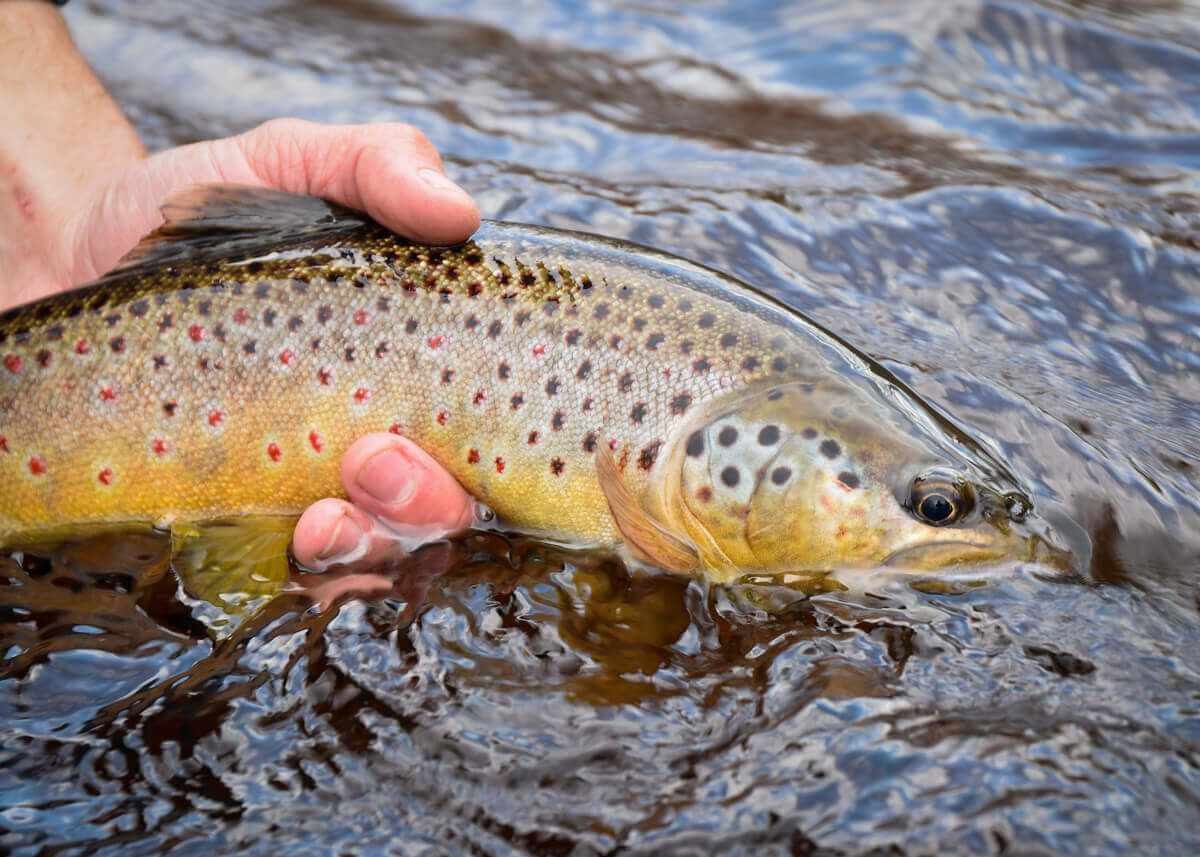 In centuries past, the river valley hosted a succession of indigenous cultures: initially the Flathead people, then later Blackfeet and Shoshone populations. Occupation by these groups ebbed and flowed, sometimes violently overlapping and other times flowing along peacefully. The arrival of Euro-Americans, and the mining and ranching booms in adjacent valleys and mountain ranges, signaled the twilight of indigenous control over the river, bringing new modifications to its landscapes and ecosystems. Some of the river’s original inhabitants were killed off–including the grizzly bear, mountain goats, and wolves–and have not returned. Other organisms were introduced, including a variety of invasive or domesticated species and, eventually, the non-native rainbow, brook, and brown trout that delight today’s anglers. A relict population of native cutthroat is still found on Tenderfoot Creek, but its future is uncertain. The hardy, native mountain whitefish is still abundant, but the Arctic grayling has gone.
In centuries past, the river valley hosted a succession of indigenous cultures: initially the Flathead people, then later Blackfeet and Shoshone populations. Occupation by these groups ebbed and flowed, sometimes violently overlapping and other times flowing along peacefully. The arrival of Euro-Americans, and the mining and ranching booms in adjacent valleys and mountain ranges, signaled the twilight of indigenous control over the river, bringing new modifications to its landscapes and ecosystems. Some of the river’s original inhabitants were killed off–including the grizzly bear, mountain goats, and wolves–and have not returned. Other organisms were introduced, including a variety of invasive or domesticated species and, eventually, the non-native rainbow, brook, and brown trout that delight today’s anglers. A relict population of native cutthroat is still found on Tenderfoot Creek, but its future is uncertain. The hardy, native mountain whitefish is still abundant, but the Arctic grayling has gone.
In recent decades the river has become a battleground for competing public and private interests, including ranchers and landowners, recreation workers, and government agencies. Montana Fish, Wildlife & Parks (FWP) achieved preeminence over other agencies in the ‘70s, but battles over property and water rights, recreation development, taxation, and environmental regulation have persisted up to the present. Indeed, the Smith River has always been a place in flux, an environment of remarkable richness–and an object of powerful competing visions.
To make these observations is not to diminish the exceptional qualities of the Smith as a place for recreation or for contact with the natural world. As environmental writers from Barry Lopez to Bill Cronon have argued, understanding the natural world as a setting that has always been marked by human presence can actually deepen our ability to appreciate “wild” places, while also motivating us to appreciate the smaller-scale natures found in our communities and backyards. Compared with locales like Glacier National Park or Yellowstone, where the lines demarcating human and natural seem more inviolable and neatly drawn, the Smith’s patchwork of ranches, forest plateaus, private cabins, float-in campsites, and fishing holes is a remarkable setting for contemplating the entangled fate of humans and nature.
Drifting languidly down a placid river in summer, it is tempting to banish such arcane thought and likewise to forget a more concrete but no less crucial fact–that the region has always been defined by aridity. All living things in and around the Smith are touched by seasonal changes in the availability of water: water encased in alpine snowbanks, precipitated in storm cells, seeping underground, and flowing along the riverbed. It is water, too, that flows through the center of a long-standing controversy that has made bumper stickers declaring “Save the Smith” or “No Smith River Mine” a common sight across Western Montana.
For upwards of 20 years, a diverse field of conservation organizations, from Montana Trout Unlimited to the Save Our Smith coalition, has worked to block extraction of an exceptionally high-grade copper deposit located a few miles up one of the Smith’s two most significant tributaries. Entering the river just after the float launch at Camp Baker, Sheep Creek represents both a vital source of the river’s flow and a crucial stretch of trout habitat; in fact, FWP studies indicate that roughly half the trout that spawn naturally in the Smith’s tributaries are born in this stream. In the years since the discovery of the phenomenal copper deposits underneath Sheep Creek, however, mining interests have moved forward with purchases of land and water rights around the tributary while waging a running legal battle with the state over extraction permits. Several years ago the original interest, a small Canadian mining concern, partnered with Sandfire Resources, a publicly traded Australian conglomerate, gathering legal and financial momentum like a powerful storm roiling across the Pacific.
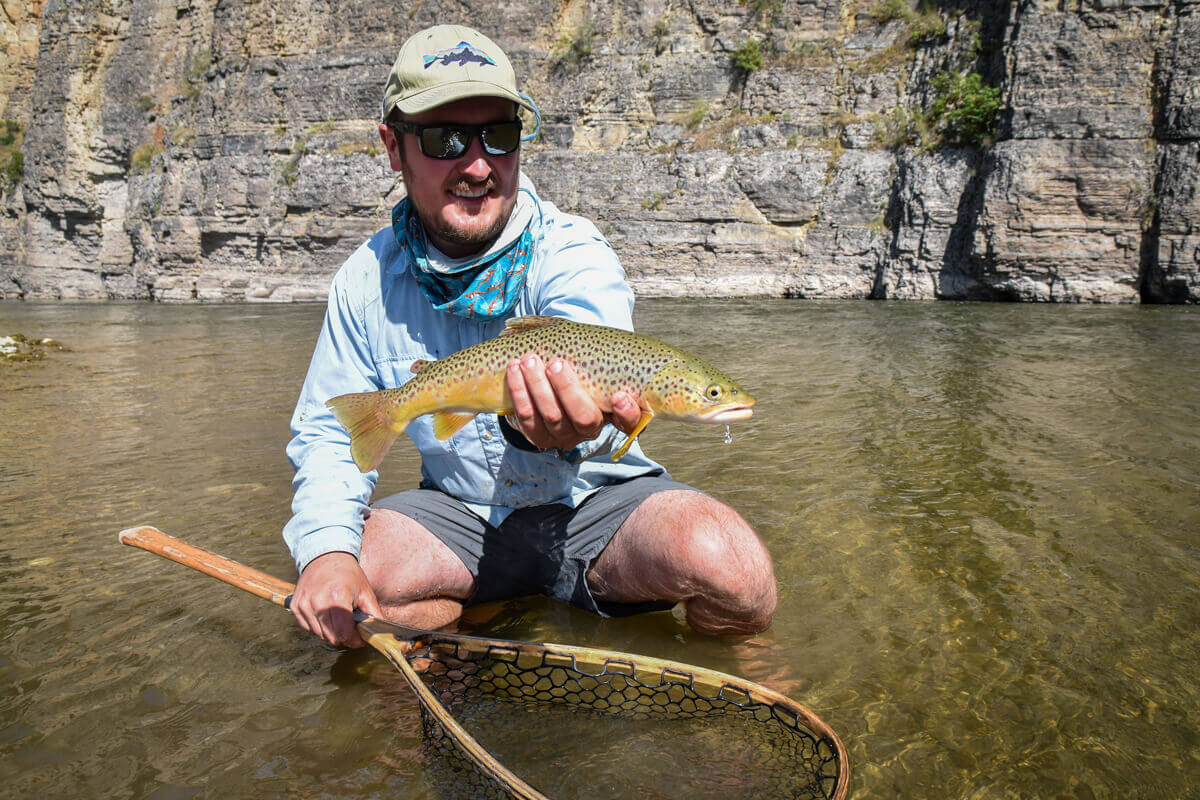 This April, having rejected the mining interests’ previous draft proposals, Montana’s Department of Environmental Quality (DEQ), citing Sandfire’s guarantees of unprecedented water protection measures, mitigation investments, and consent to government oversight, finally issued permits for the mine development to proceed. Construction of facilities and excavation are scheduled to take place over the coming two years, although it remains to be seen whether circumstances surrounding the COVID-19 pandemic will delay or modify these plans. The threat of mining on the Smith has made strange bedfellows: Conservationists, landowners, and activists alike have greeted this news with dismay and frustration, fearing acid leaching, explosive nitrate residue, high arsenic levels, water depletion, and more environmental damage as a result of the proposed mining interests. For Smith River landowners, the prospect of mining is even more alarming than the government oversight and recreational development many have previously opposed; bold, hand-painted signs on private land abutting the river exhort boaters to save the Smith and authorities to stop the mine from moving forward. Similarly, river guides, outfitters, and others who depend on the millions of dollars generated annually by recreation on the Smith view the decision with predictable fear and skepticism.
This April, having rejected the mining interests’ previous draft proposals, Montana’s Department of Environmental Quality (DEQ), citing Sandfire’s guarantees of unprecedented water protection measures, mitigation investments, and consent to government oversight, finally issued permits for the mine development to proceed. Construction of facilities and excavation are scheduled to take place over the coming two years, although it remains to be seen whether circumstances surrounding the COVID-19 pandemic will delay or modify these plans. The threat of mining on the Smith has made strange bedfellows: Conservationists, landowners, and activists alike have greeted this news with dismay and frustration, fearing acid leaching, explosive nitrate residue, high arsenic levels, water depletion, and more environmental damage as a result of the proposed mining interests. For Smith River landowners, the prospect of mining is even more alarming than the government oversight and recreational development many have previously opposed; bold, hand-painted signs on private land abutting the river exhort boaters to save the Smith and authorities to stop the mine from moving forward. Similarly, river guides, outfitters, and others who depend on the millions of dollars generated annually by recreation on the Smith view the decision with predictable fear and skepticism.
By contrast, the thousand-or-so residents of nearby White Sulfur Springs have their reasons for welcoming Sandfire’s mining project. Like countless others in the rural West, these locals have struggled for decades as the ranching economy stagnated and growth passed them by for better-situated regional hubs. To the citizens of this small community, the approximately 240 middle-income jobs promised by the mine’s 16-year development plan represent a major–though necessarily finite–economic windfall.
Recent approval of the Black Butte Mine on Sheep Creek is a puzzle embedded in several larger puzzles–from the long regional history of degraded Montana waterways to the evolving palimpsest of state water law and resource management. I spoke at length with a water rights consultant, formerly employed by the Montana Department of Natural Resources and Conservation (DNRC), about the proposed development, and he dug up some revealing figures. Although the mining company has purchased what appear to be adequate water rights for its projected needs and mitigation planning, the vast majority of rights in Sheep Creek and elsewhere are what experts refer to as “paper water.” That is because the combined volume of all rights held on the Smith, nominally for agricultural use, vastly exceeds the total water available in the river and its tributaries–even in the best years.
In fact, like many Montana rivers with extensive backlogs of contested and largely hypothetical water rights, the Smith is under adjudication, which after an unpredictable number of years will result in significant reductions in the number and extent of water claims. The rights now held by Sandfire’s Black Butte project, whether or not they prove adequate in the long run to offset depletions involved in operating a large-scale mine, are likely not based on real historical use and may have little relevance to the Smith’s future water predicaments. They are better understood as a legal foothold that anticipates a contested future rather than a true guarantee of protections for a river basin in which neither man-made nor natural changes in the environment are wholly predictable.
Moreover, the projections in official documents surrounding the permit are full of caveats and qualifications, underlining the point that the deposit’s unique geological characteristics preclude ironclad predictions and necessitate experimental and admittedly capital-intensive mining techniques, including cutting-edge methods of tunnel backfill and water purification. What emerged from my discussions with water experts and examination of reports in the public domain is a picture of irresistible financial and legal momentum coupled with deep-flowing uncertainty about the Smith’s ecological and recreational future. Perhaps the mine’s mitigation technologies and flow remediation will protect the fragile and already imperiled Smith; perhaps they won’t. The only guarantee on these fabled waters is a future of uncertainty.
Perhaps the greatest enigma of the Smith is that it is none of the things it is commonly described as: It is neither a pristine wilderness nor a well-kept secret nor even, simply, a treasured public resource. It is a complex hybrid environment, a product of entangled and often conflicting human and natural forces. It is at once a messy patchwork of private and public land, use rights new and old, native and non-native organisms, ancient and novel ecosystems, and watery riparian spaces that confound tidy legal and economic frameworks. As anybody who floats down the river comes to understand, it is all the more mysteriously beautiful for this complexity: The non-native trout flashing under the water’s surface, the moldering cabins of earlier generations, the Smith’s soaring limestone walls with their cryptic indigenous traces, the campfires that twinkle along the river’s banks–all are parts of a remarkable, enduring whole.
In his memoir of growing up on a Smith River ranch, Montana author Ivan Doig penned the line that perhaps best expresses the fate of the Smith River as well as those who love and depend upon it: “There is more time than there is expanse of the world and so any voyage at last will end.”
The author, Reed Knappe is the Conservation/Resources Editor of Strung Magazine.

